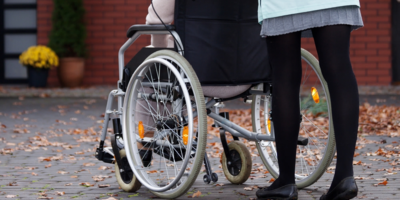Development of a software for quality assurance in 24-hour care

Assistive technologies promise an active and self-determined life for older people or people with disabilities. To fulfill this vision, technology assessment is key as it takes into account the needs of different user groups before and during the development process.
Europe’s population is changing and the proportion of older people is increasing. Different groups have different needs. For the elderly, this might mean having to face various restrictions in everyday life and at work. Sometimes, assistance is needed to get by. Economically, this translates into increased pressure on national social and health services. Thus, hopes are high for so-called "assistive" technologies to provide relief. In light of these expectations it is crucial that technical innovations are being assessed in a fair and balanced manner. Technology Assessment (TA) asks: What can assistive technologies contribute to various areas of life - and what can’t they? How can the use of technologies meet people's needs and support them? Which social innovations and measures are necessary and how can they be supported by technology?
Technologies can help to better include older people and people with disabilities and enable participation. Ideally, they can support us in different areas of life, such as mobility or communication. Tools such as the smartphone and the Internet are usually not perceived as tools, as they are widely used and seem particularly attractive. Others - in particular walking aids - can trigger fears of social stigmatisation. So how can technologies and social innovations interact in the best possible way: Take for example smart home technologies – their implementation has proven to be more successfully if a small team of aides continuously supports the interaction between human and new technology. Another example are multi-generation houses - some essential aspects of support can be covered by technology, others by social innovation.
TA contributes to this approach by comprehensively investigating assistive technologies. This not only involves economic considerations, but also the practical embedding of technologies in everyday life and the consideration of ethical aspects. Who are the winners, who are the losers of these developments? In other words - who profits under what conditions, who bears the costs and who takes the risks? One of the goals is therefore to develop methods to identify the diverse needs of users and to involve them directly in the development as far as possible. This is to ensure that assistive technologies best meet the needs and wishes of users.
The ITA also looks at ways of technology use for older people and people with very specific needs. We focus on the question how these needs can be integrated into technology development at an early stage. By looking at the close cooperation between research and development from new points of view it is possible to better with the ethical challenges innovations can bring about for a specific group of users.